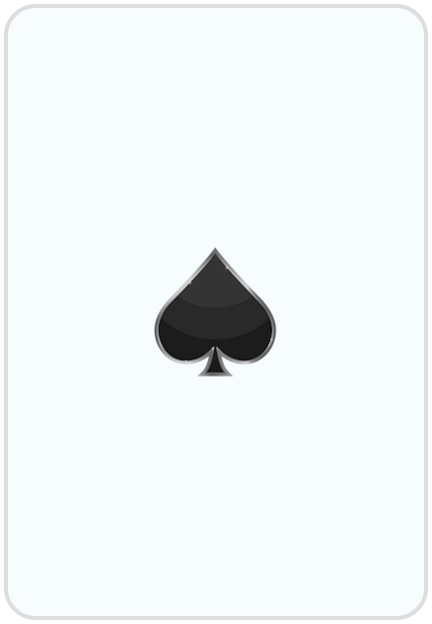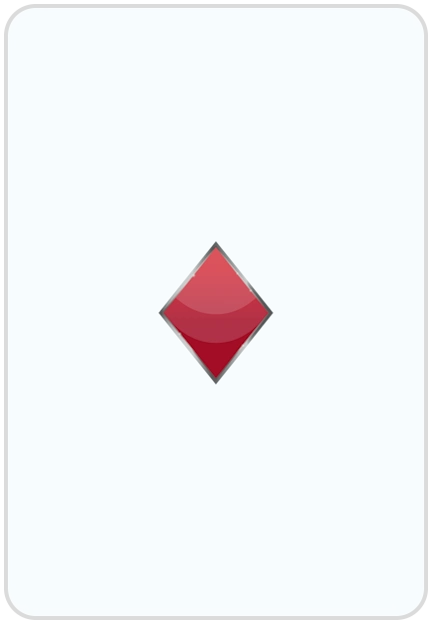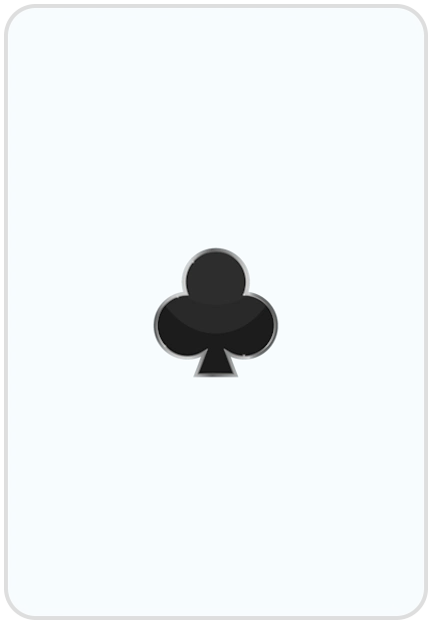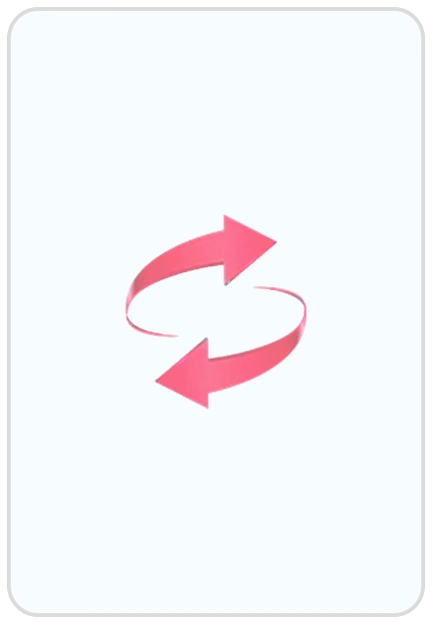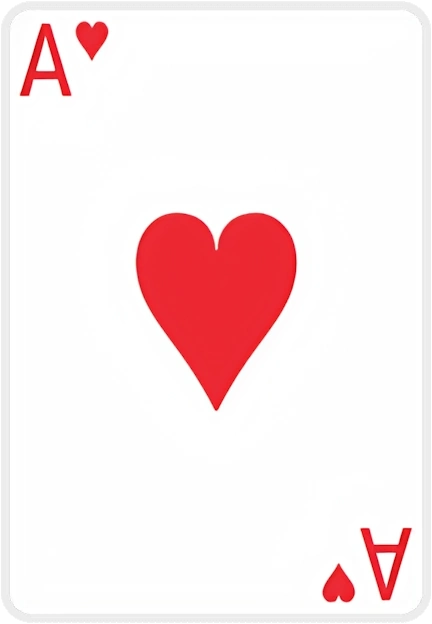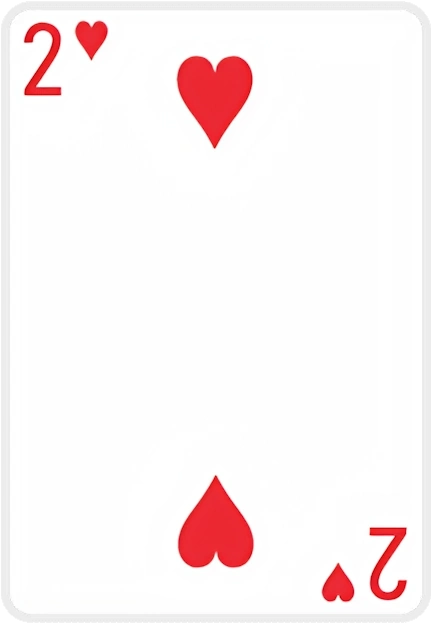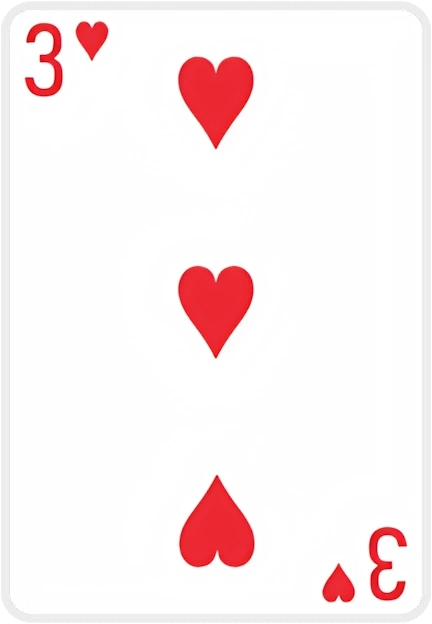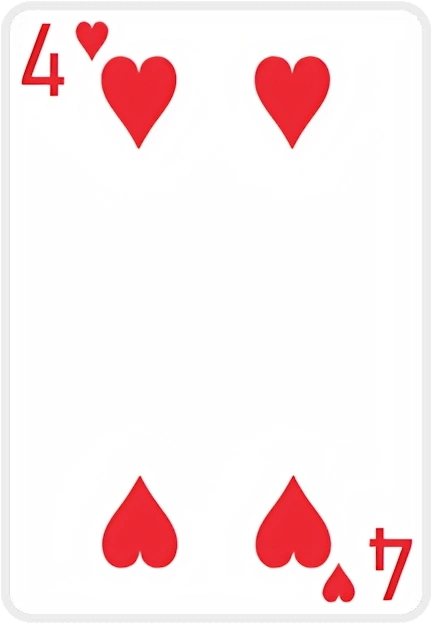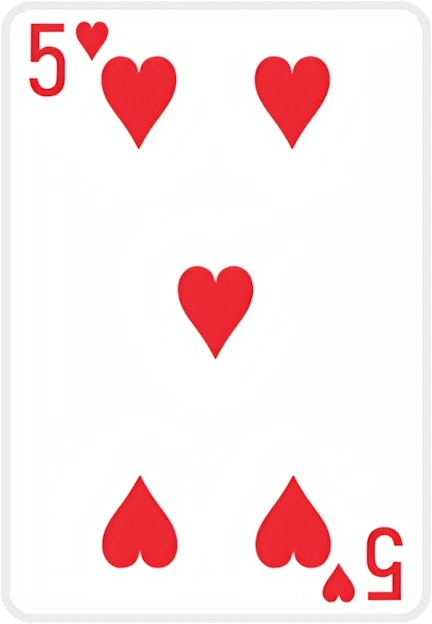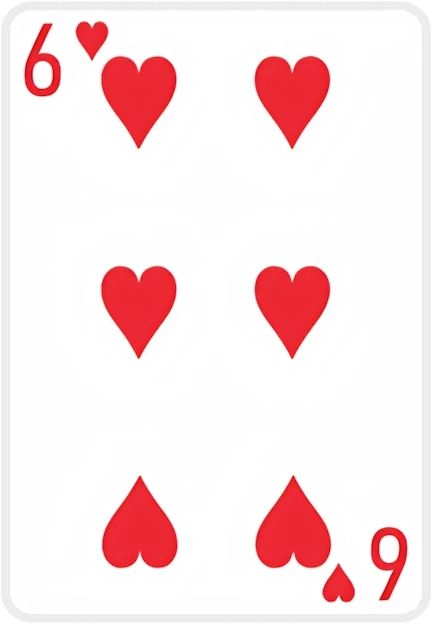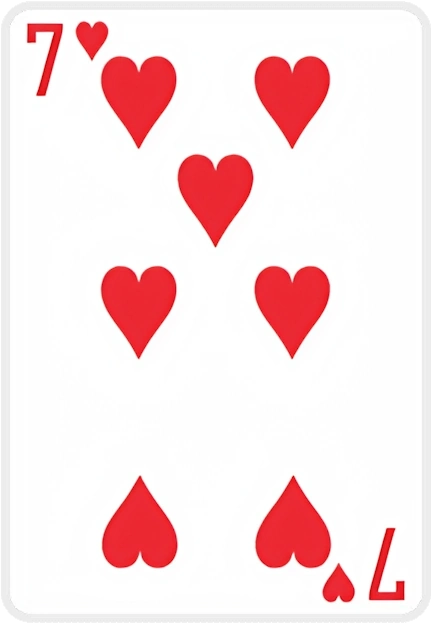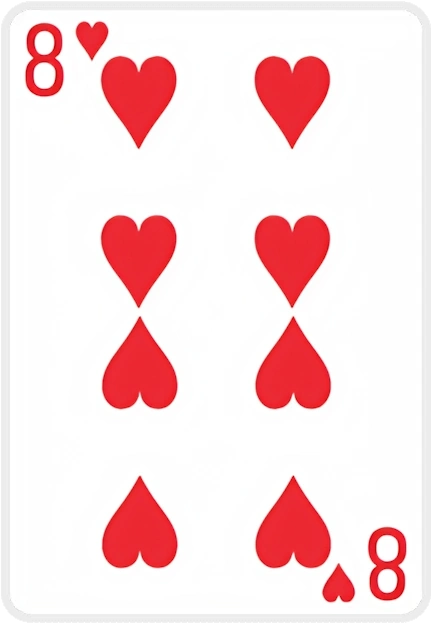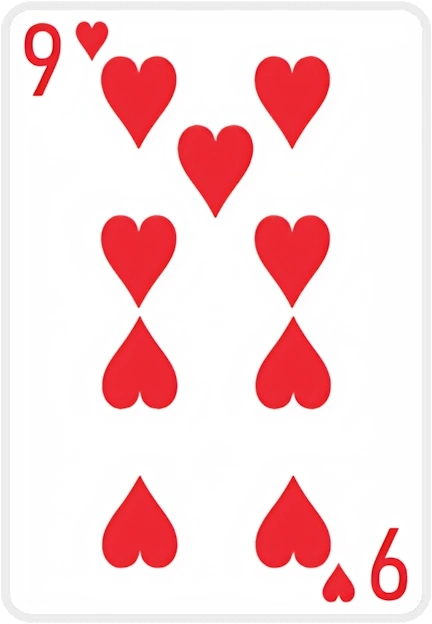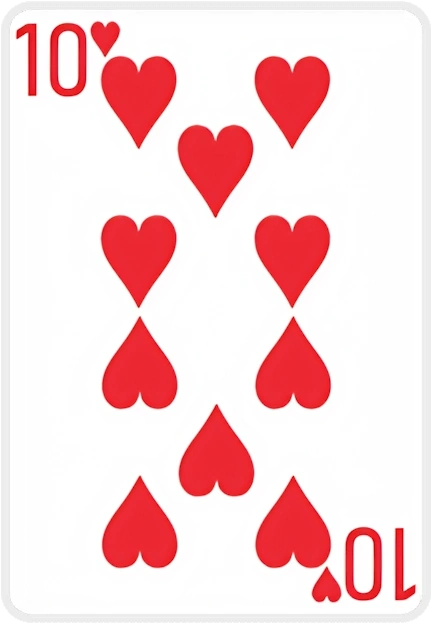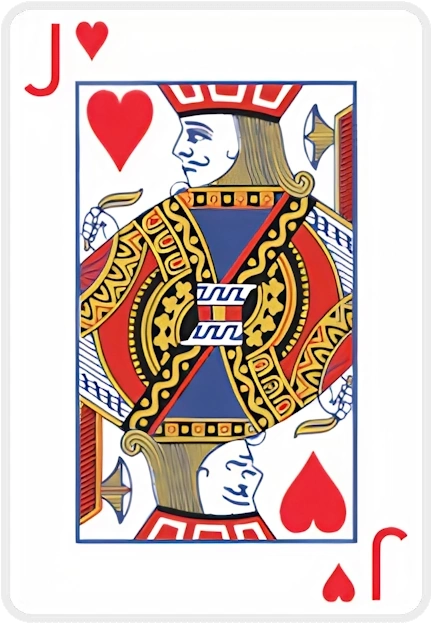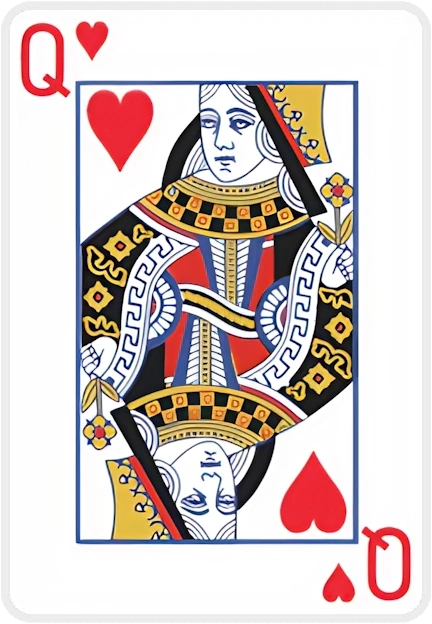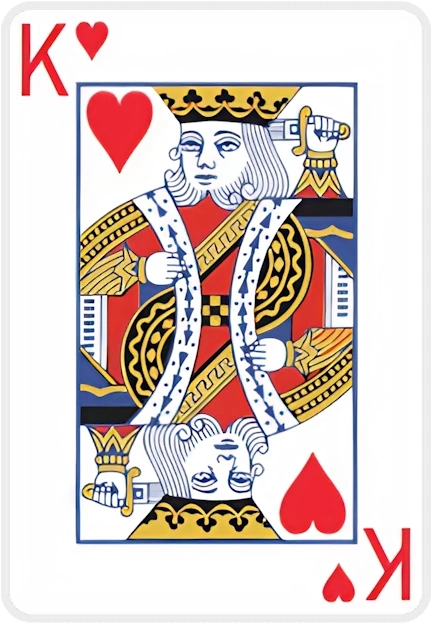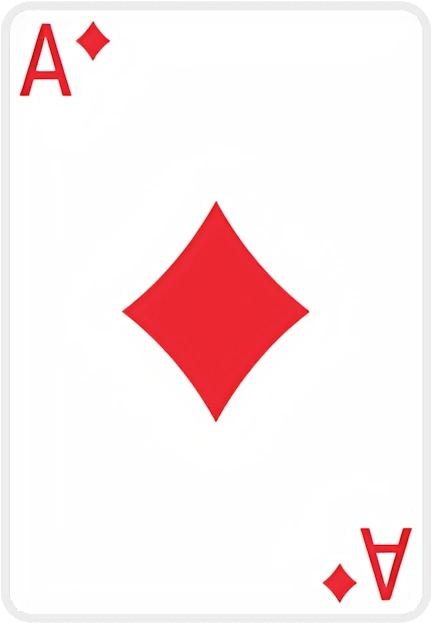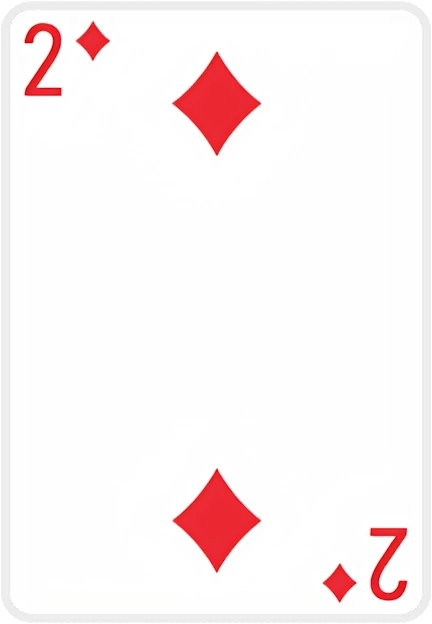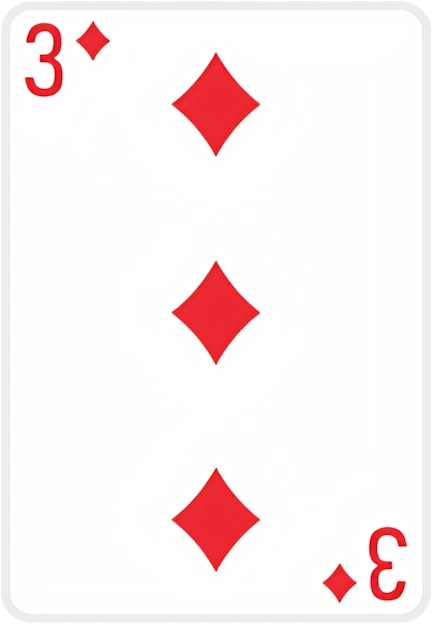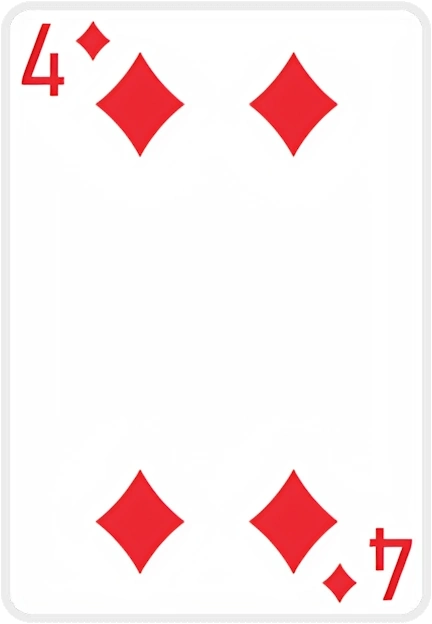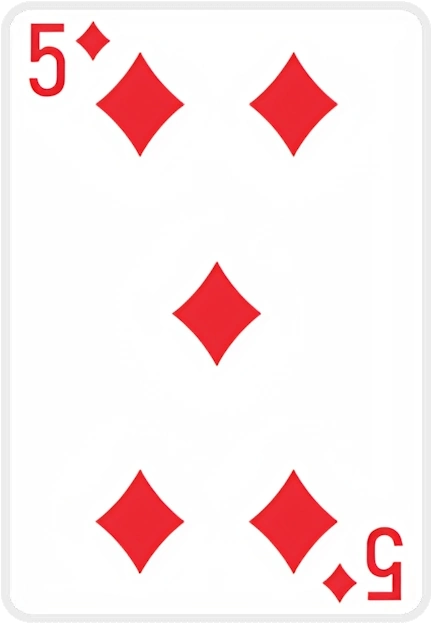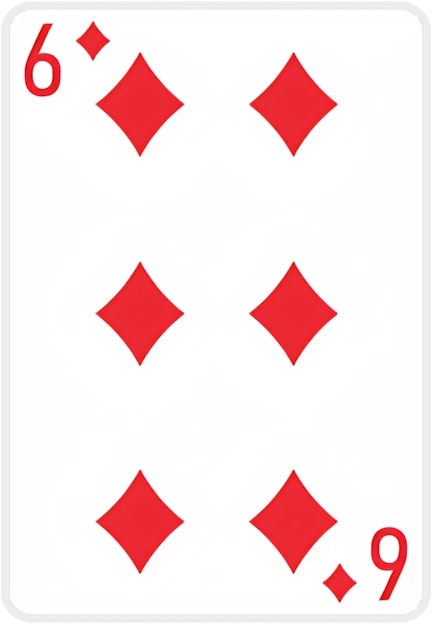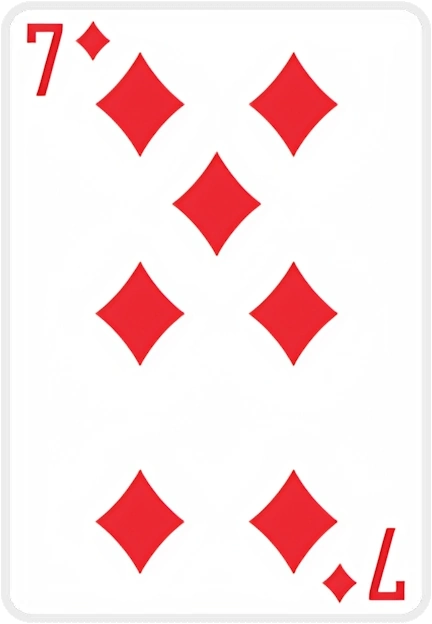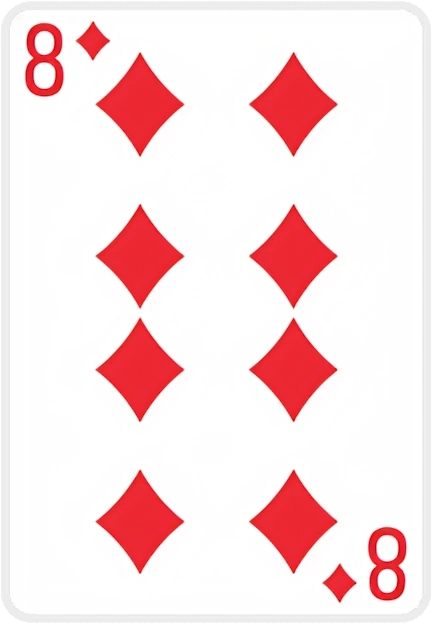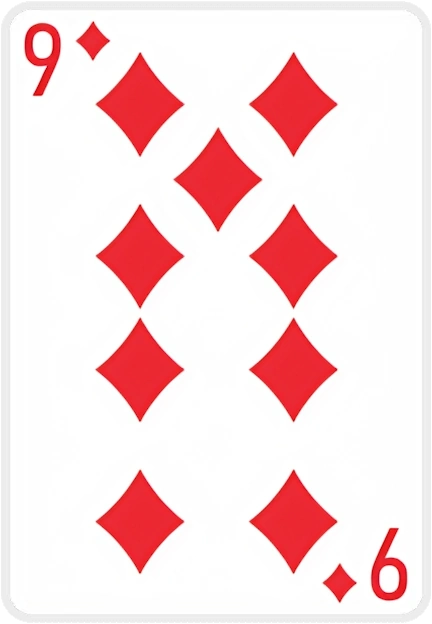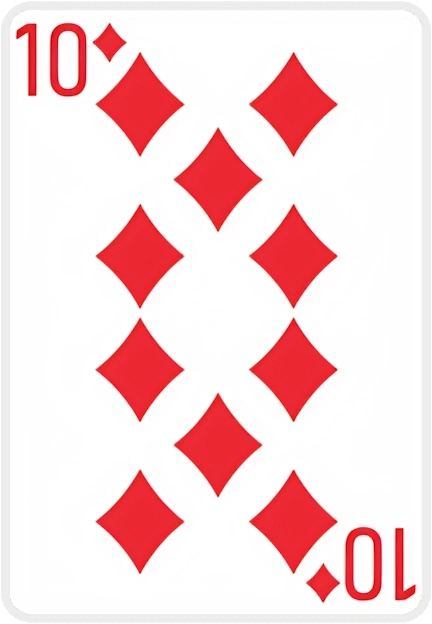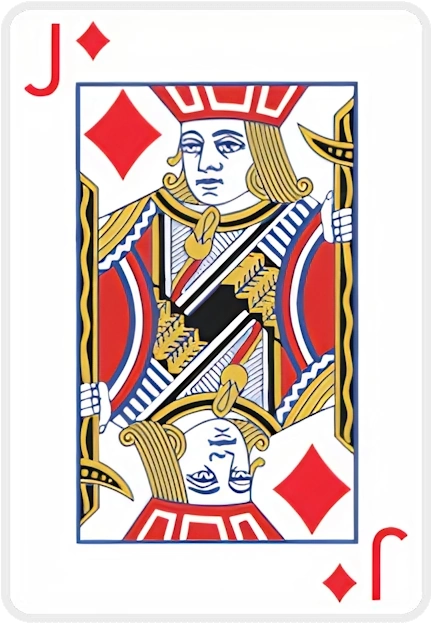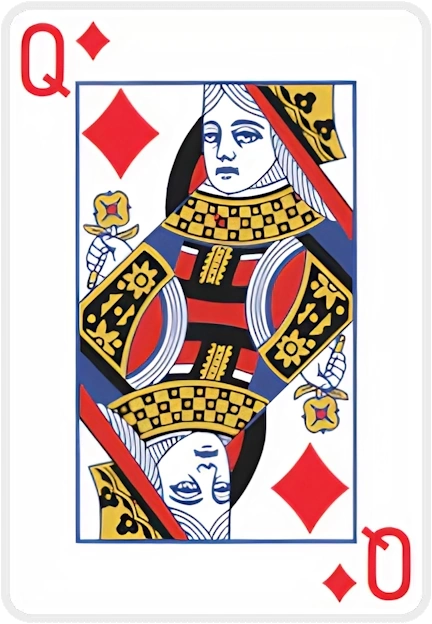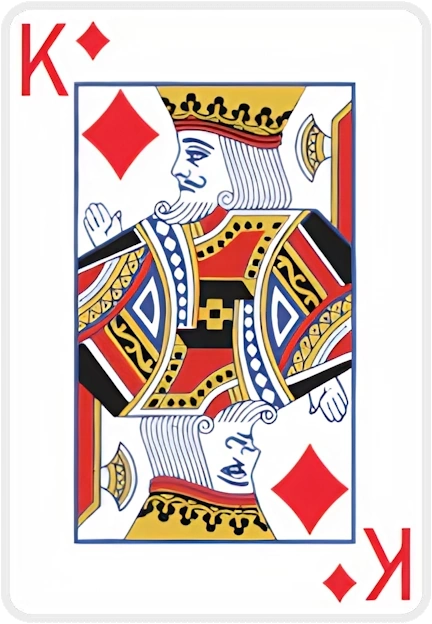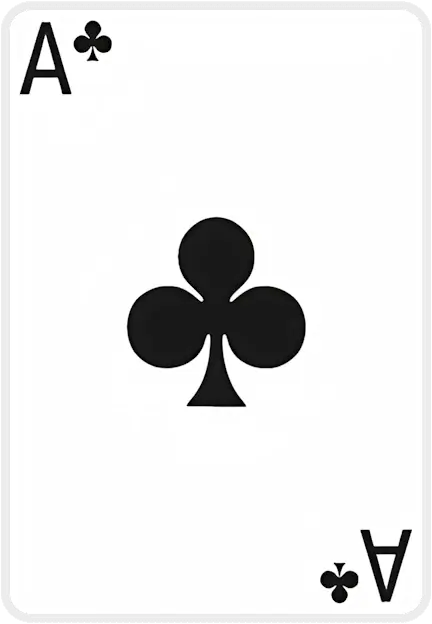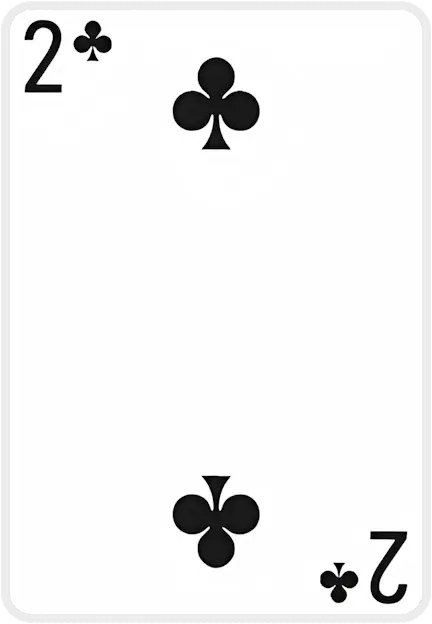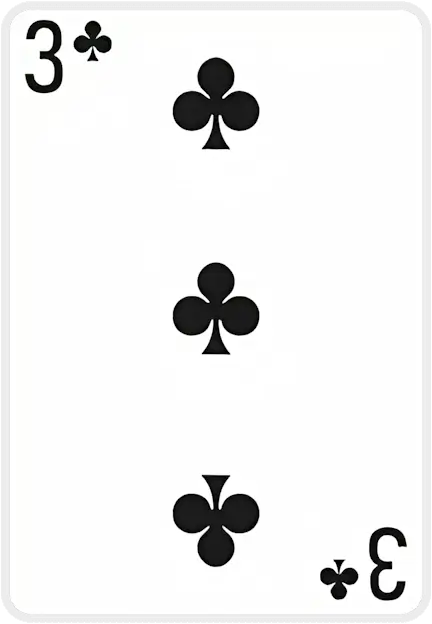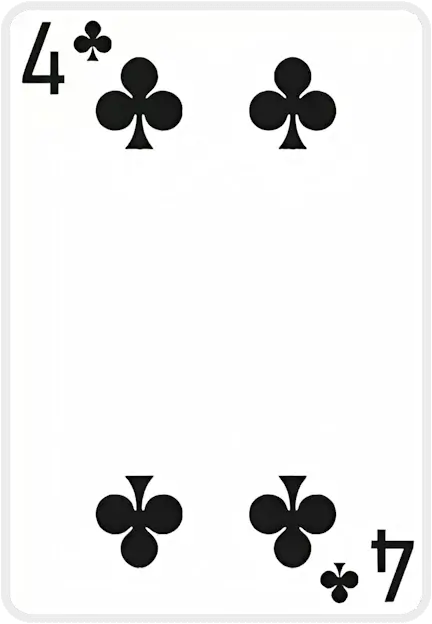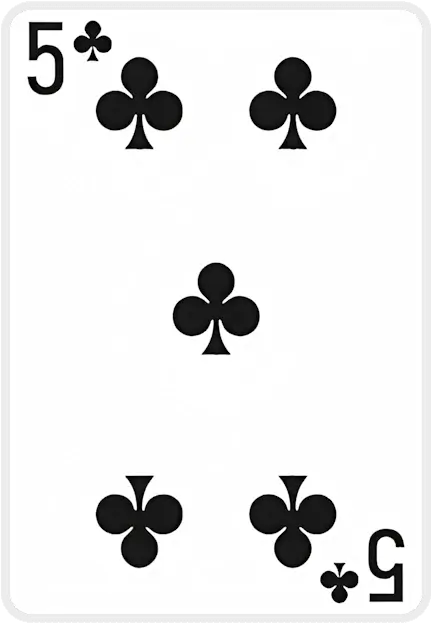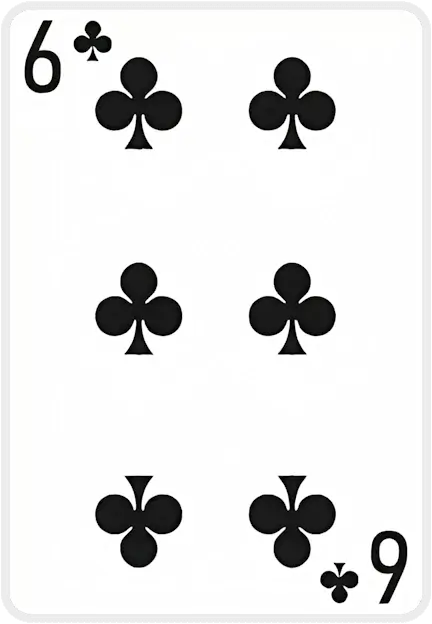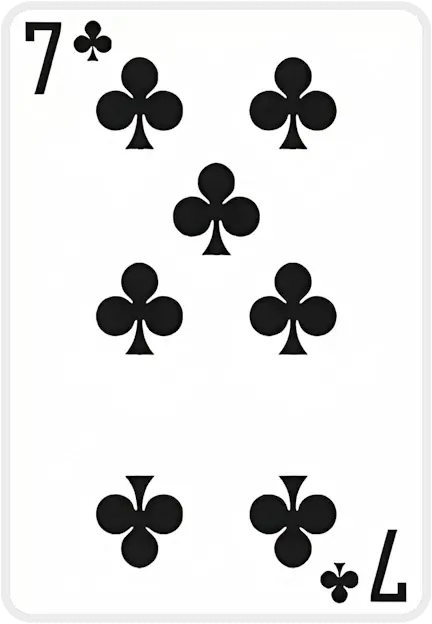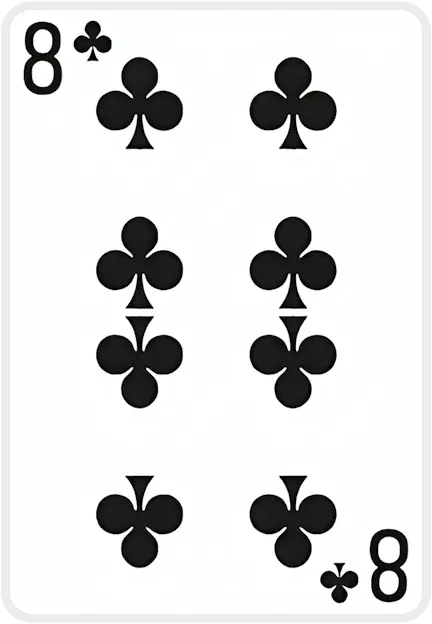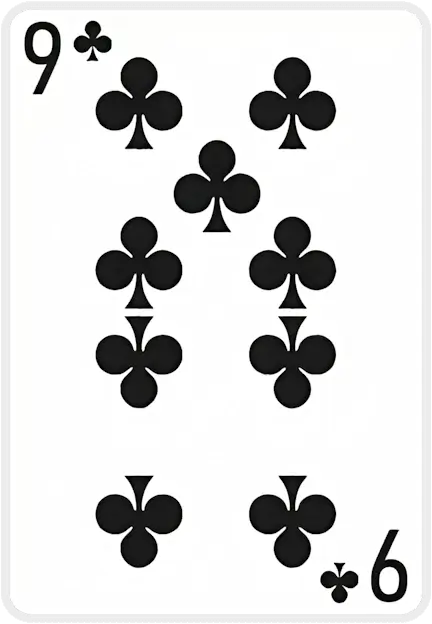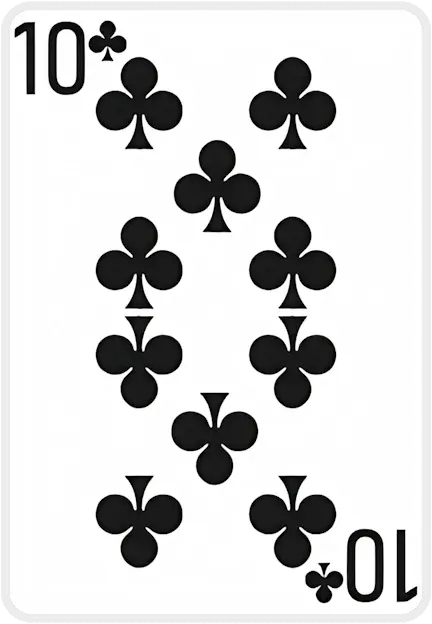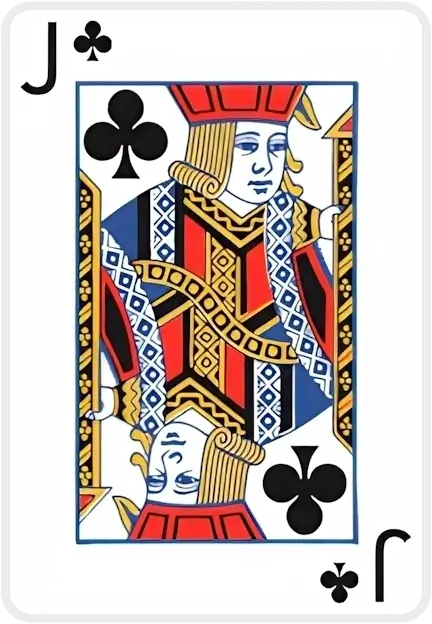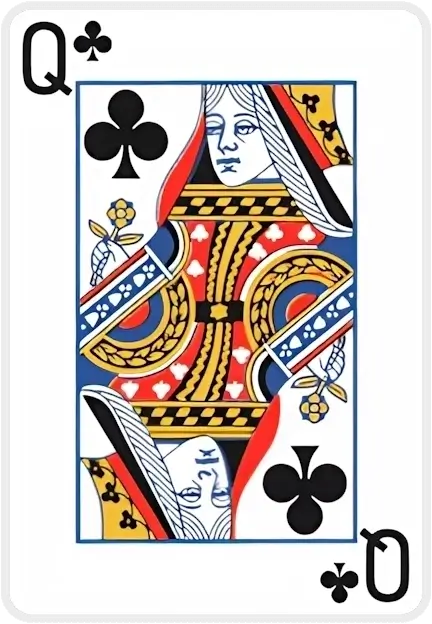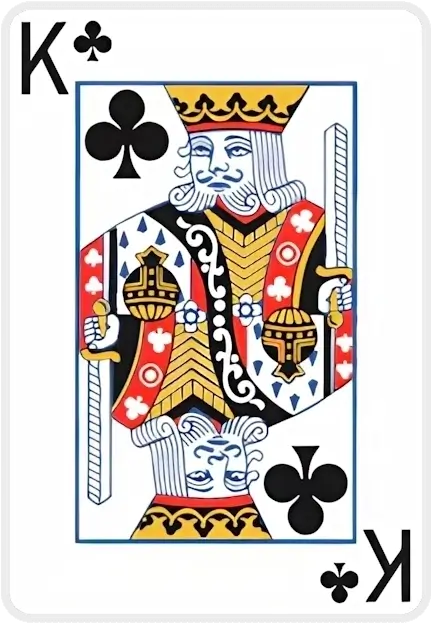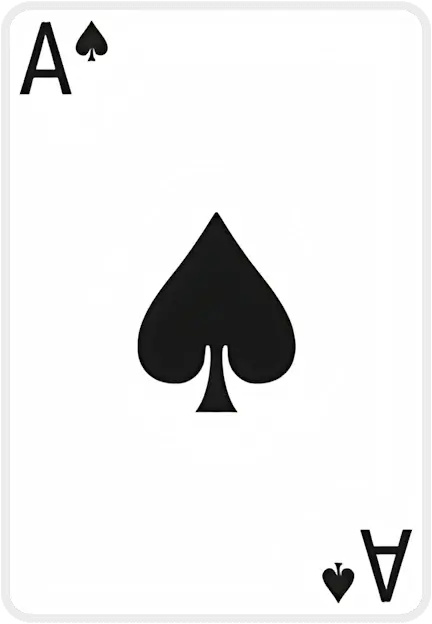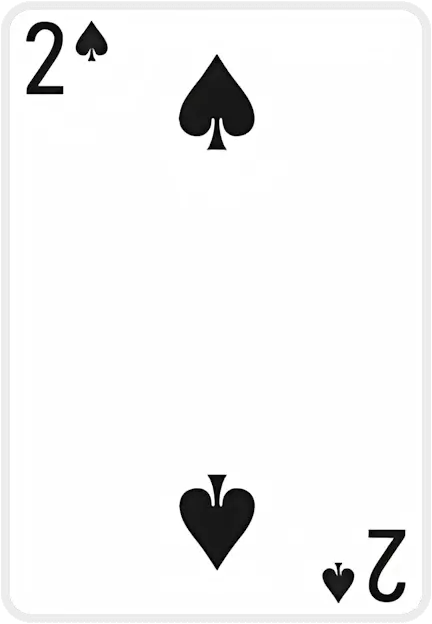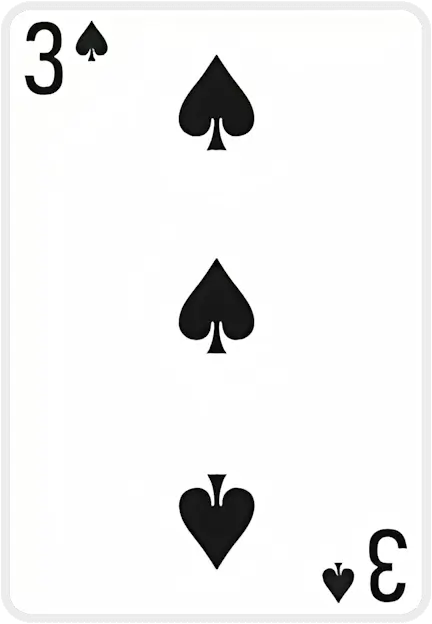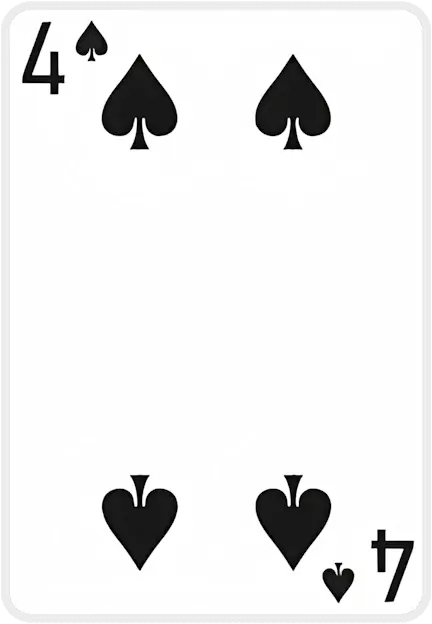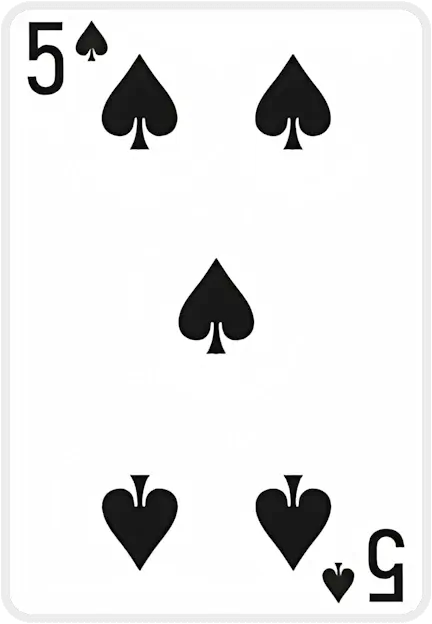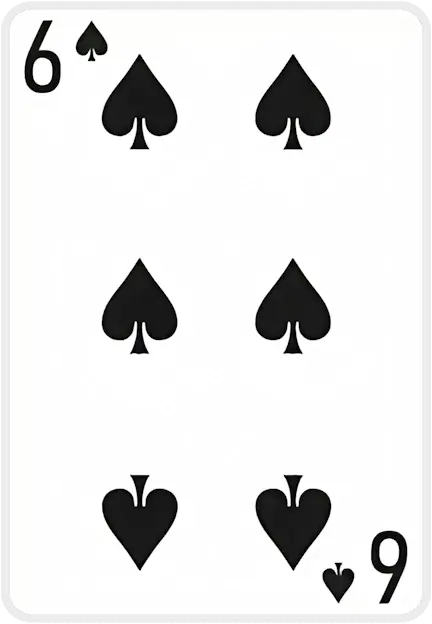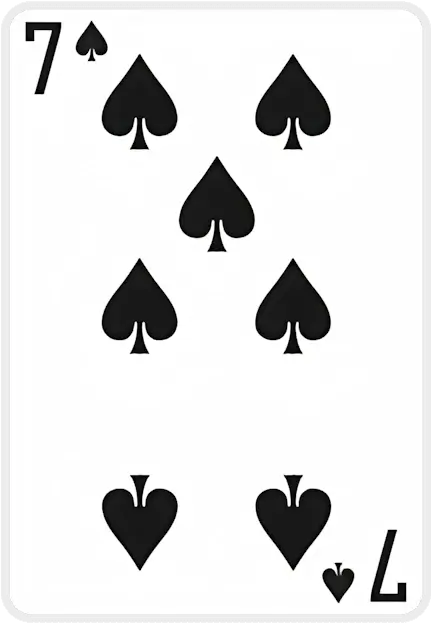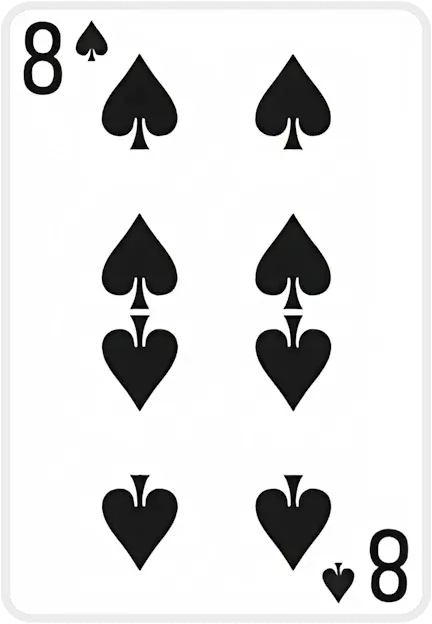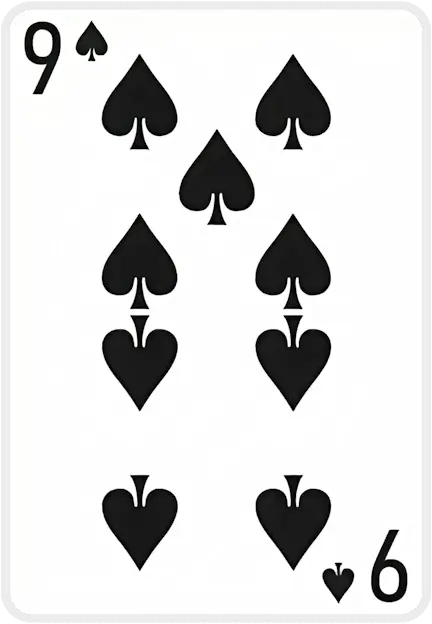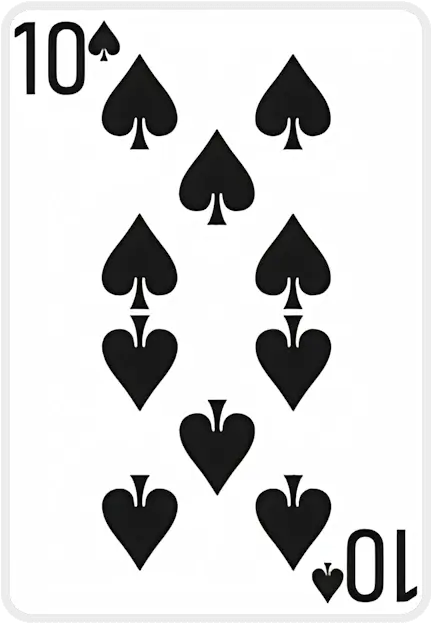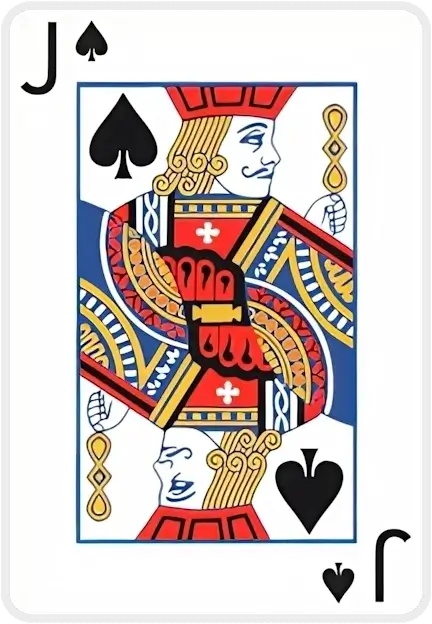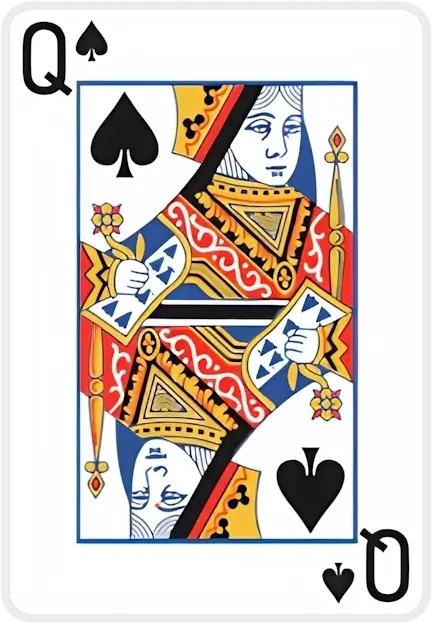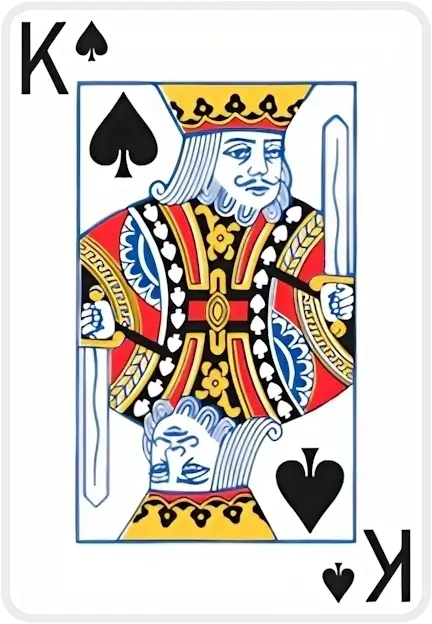Cannot drop, your card needs to be of an opposite suit colour
Cannot drop, your card needs to be one rank lower
Cannot move multiple cards to foundation
Card suit doesn't match foundation pile suit
Card can only be dropped on top of a card pile
Cannot deal cards when there are empty tableau piles
You can only move {0} card(s) at a time based on the current free cells and tableau
The cards don't add up to 13 and cannot be moved
The card is inaccessible and move cannot be performed
Cards must be in sequential order (one higher or lower)
Double Scorpion Solitaire

🦂 Double Scorpion Solitaire 🕷️
Double Scorpion Solitaire is an exciting two-deck variation on the classic Scorpion and Spider solitaire games. Played with two full decks (104 cards), the goal is to build eight descending suit sequences (King down to Ace) on the tableau. This challenging yet approachable patience game blends Spider-like strategy with Yukon-style moves, making every playthrough unique. You can play Double Scorpion Solitaire for free online at solitairex (solitairex.io/double-scorpion) – no download or registration needed! 🎮✨
How to Play Double Scorpion Solitaire
Follow these steps to get started (new players should read carefully):
-
Deal the Cards: Shuffle two 52-card decks (104 cards total) and deal all cards into 10 tableau columns. The first 4 columns each have 11 cards (with the top 4 face-down and the bottom 7 face-up), the 5th column has 10 cards (4 face-down, 6 face-up), and columns 6–10 each have 10 cards all face-up. There is no stock or draw pile – all cards start on the tableau.
-
Build Sequences by Suit: You can move cards downward by suit (e.g. ♥Q on ♥K, ♠10 on ♠J). Any face-up card (and the cards atop it) can be moved together onto a higher-rank card of the same suit. For example, if you see a 7♣ with a 5♣ and 4♣ on top of it, you can move the whole 7-5-4♥ stack onto an 8♣. This Yukon-like rule means you can always play any face-up card to free hidden cards.
-
Empty Columns with Kings: Empty tableau columns may only be filled by a King (or a sequence starting with a King). In other words, you can only move a King into a gap, or move a stack headed by a King into an empty space. This rule helps you reshuffle cards and uncover buried cards.
-
Win by Completing Eight Runs: The objective is to form eight complete sequences of 13 cards each, in suit order from King down to Ace. In practice, when you successfully build a full King–Ace run, leave it in place (completed runs are not removed during play). The game is won once all cards are organized into these eight descending suit sequences.
These rules mean you’re always looking to uncover face-down cards and create long suited runs. A typical strategy is to expose hidden cards early and avoid burying Aces too soon. Keep empty columns available for repositioning Kings, and remember that every move can help free up more plays. With practice, you’ll master the art of building those perfect runs!
History & Origin
Double Scorpion Solitaire is a modern member of the Spider family of patience games. Its single-deck ancestor, Scorpion Solitaire, was popularized in computer card collections and solitaire books in the late 20th and early 21st centuries. In fact, solitaire author David Parlett notes that many Spider-family games bear arachnid-themed names (Scorpion, Tarantula, Black Widow, etc.). Scorpion’s exact origin is unclear, but it was documented in Michael Keller’s 2002 Little Book of Solitaire and other compilations of classic patience games.
The two-deck Double Scorpion variant appears to have emerged later as players adapted the rules to use 104 cards. Solitaire enthusiasts like Thomas Warfield have listed it online, and rule pages describe it simply as “an easy two-deck variation of Scorpion”. No single inventor is credited – the game likely evolved through computer game developers and card-game hobbyists. What we do know is that Double Scorpion retains the core challenge of Scorpion while doubling the deck for extra challenge and fun.
Where to Play
- Double Scorpion Solitaire: Play the two-deck version online for free at solitairex: https://solitairex.io/double-scorpion (just click “New Game” to start).
- Scorpion Solitaire (1 deck): The classic one-deck game is also available at solitairex: https://solitairex.io/scorpion – try it if you want a slightly easier challenge.
- More Spider Games: Explore other spider-themed solitaire games in the solitairex Spider category (e.g. Spider Solitaire 2-Suit and 4-Suit) for more free, browser-based fun.
Whether you’re new to patience card games or a seasoned player, Double Scorpion Solitaire 🦂 offers a rich, strategic experience. Visit solitairex and enjoy this elegant solitaire variant today!
Sources: Authoritative Solitaire guides and websites.
Case Studies
All figures below come directly from our database. Using first-party data ensures every insight is evidence-based, up-to-date, and privacy-respectful.
| Game Tier | Stand-out Titles | Win Rate |
|---|---|---|
| Quick Wins | Spider (1 Suit), Hole-in-One, TriPeaks | 70–84% |
| Fair Challenges | Solitaire (Draw 1) – 913 k plays FreeCell, Golf |
45–63% |
| Expert-Level | Spider (4 Suits), Forty Thieves, Double Scorpion | ≤11% |
Curious which moves turn the odds in your favor? Explore all the data & strategies →
What people say about us
Interview with Beverley Walker-Daury
At 87, Beverley Walker-Daury shares how SolitaireX brings joy, companionship, and purpose to her days in a retirement home.
Player Interview: Poul Andersen
Poul Andersen shares how playing SolitaireX helps him keep his brain sharp and active.
Player Interview: Peter Gross
Peter Gross, 81, shares how SolitaireX became his go-to place for relaxing Freecell games and friendly competition.
Player Spotlight: St0Sh0’s Record-Breaking Runs on SolitaireX
We sit down with speed-solitaire sensation St0Sh0 to talk record times, favorite variants, and why SolitaireX is his go-to card-game hub.
Fresh from the SolitaireX Blog

Decks & Destinations: The Solitaire Traveler Series Part 5: Berlin — Strategy & Culture Walks
Berlin’s rhythm of reflection and structure pairs perfectly with Solitaire’s calm logic. This guide invites travelers to explore the city’s culture and canals with a few mindful moves between each stop.

Decks & Destinations: The Solitaire Traveler Series Part 4: Tokyo – Mindful Play in a Fast City
Tokyo’s fast pace hides countless moments of calm — perfect for a mindful round of Solitaire. This traveler’s guide pairs iconic spots with short, focused play sessions to restore clarity on the go.

Decks & Destinations: The Solitaire Traveler Series Part 3: Seattle — The PC-Era Vibe
Seattle’s rain-washed calm pairs perfectly with Solitaire’s quiet focus. This traveler’s guide shows how to blend sightseeing, coffee breaks, and short, finite puzzles into a mindful PC-era rhythm.

Decks & Destinations: The Solitaire Traveler Series Part 2: London – From “Patience” to Presence
London’s slower moments pair perfectly with Solitaire—once known locally as “Patience.” This traveler’s guide blends calm city rhythms with mindful card play to help you recharge between adventures.
Latest guides crafted by Stoyan Shopov and Kalin Nikolov
Golf Solitaire Mastery: Strategy, Stats & Flow
Deal 7 columns of 5 face‑up cards (35 total). The remaining 17 cards*form the stock; flip the first stock card to start the waste. You may move only exposed tableau cards, and only if the rank is exactly one higher or lower than the waste top. Suits don’t matter. When no move exists, flip a new waste card. Clear all tableau cards to win.
TriPeaks Solitaire Mastery: Strategy & Analytics
Two peaks are dust; one stubborn ridge remains. Your waste shows a 9. The tableau flashes 10‑J‑10‑9‑8 like a heartbeat. You nudge the 10, feel the cadence lock in, and—without overthinking—trace a neat descent that crumbles the last peak. That tiny spark of *flow* is why TriPeaks hooks serious players: rhythm, restraint, and the rush of a run that arrives exactly on time.
Pyramid Solitaire Mastery: Strategy, Stats & Joy
Picture the pyramid down to its last stubborn tier: a Queen pinned beneath a ridge, a lone Ace on the waste, and a King begging to be burned for tempo. Heartbeat, breath, click—then the whole structure yields in a rush. If you’ve hit that razor‑edge finale, you already know Pyramid’s secret: small decisions, made in the right order, change everything.
FreeCell Solitaire Mastery: Strategy & Analytics Guide
I have a 15 years personal, lived experience—picture a scene built from thousands of session logs and notes from serious players: It’s late, and the board looks jammed. You clear a single column, free one cell, and suddenly a 9♣‑8♦‑7♣‑6♦ chain glides into place, untying the knot you stared at for ten minutes. The rush isn’t luck—it’s the quiet pleasure of a plan snapping into focus. When did FreeCell last feel less like “killing time” and more like practicing a craft you can actually master?
Media About Us
0


